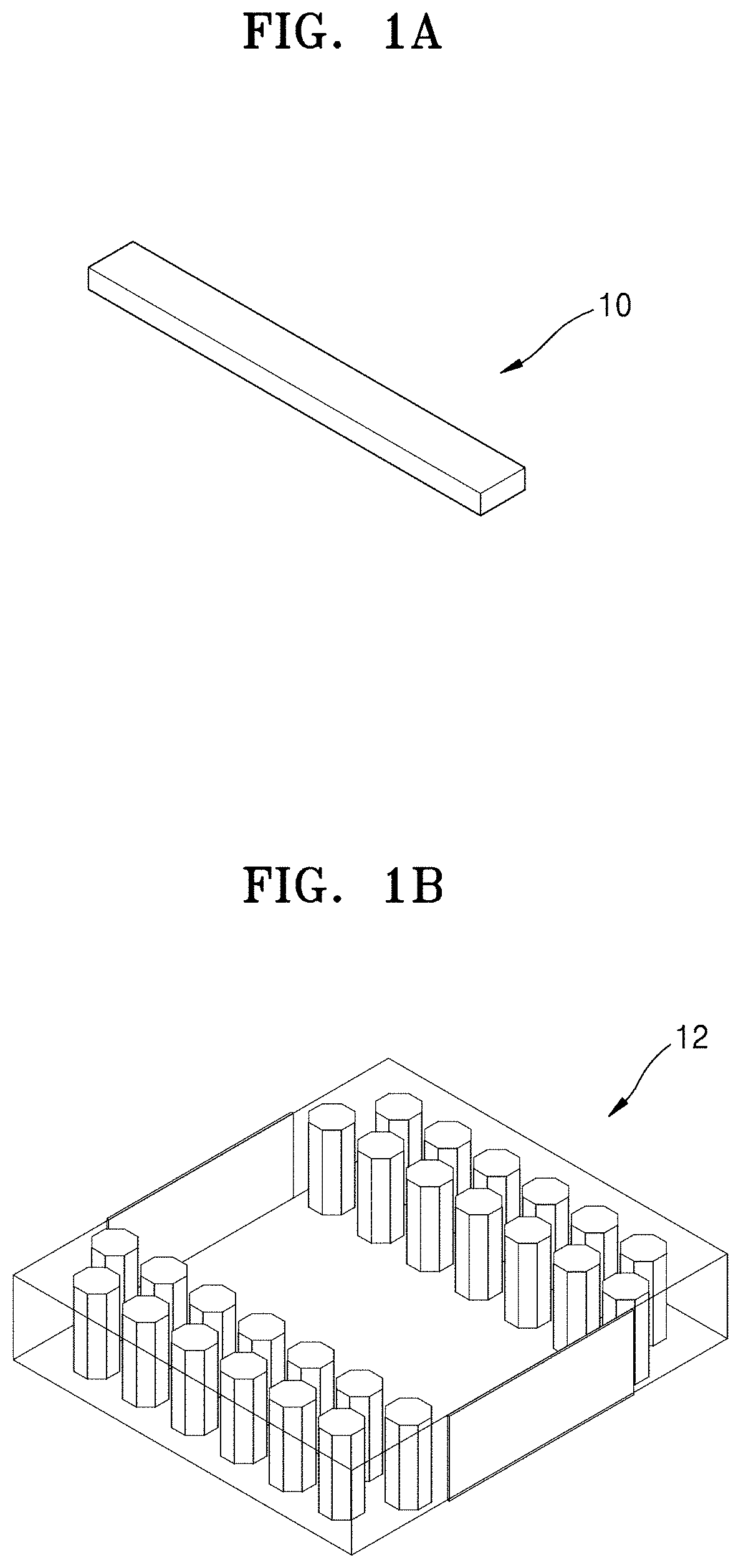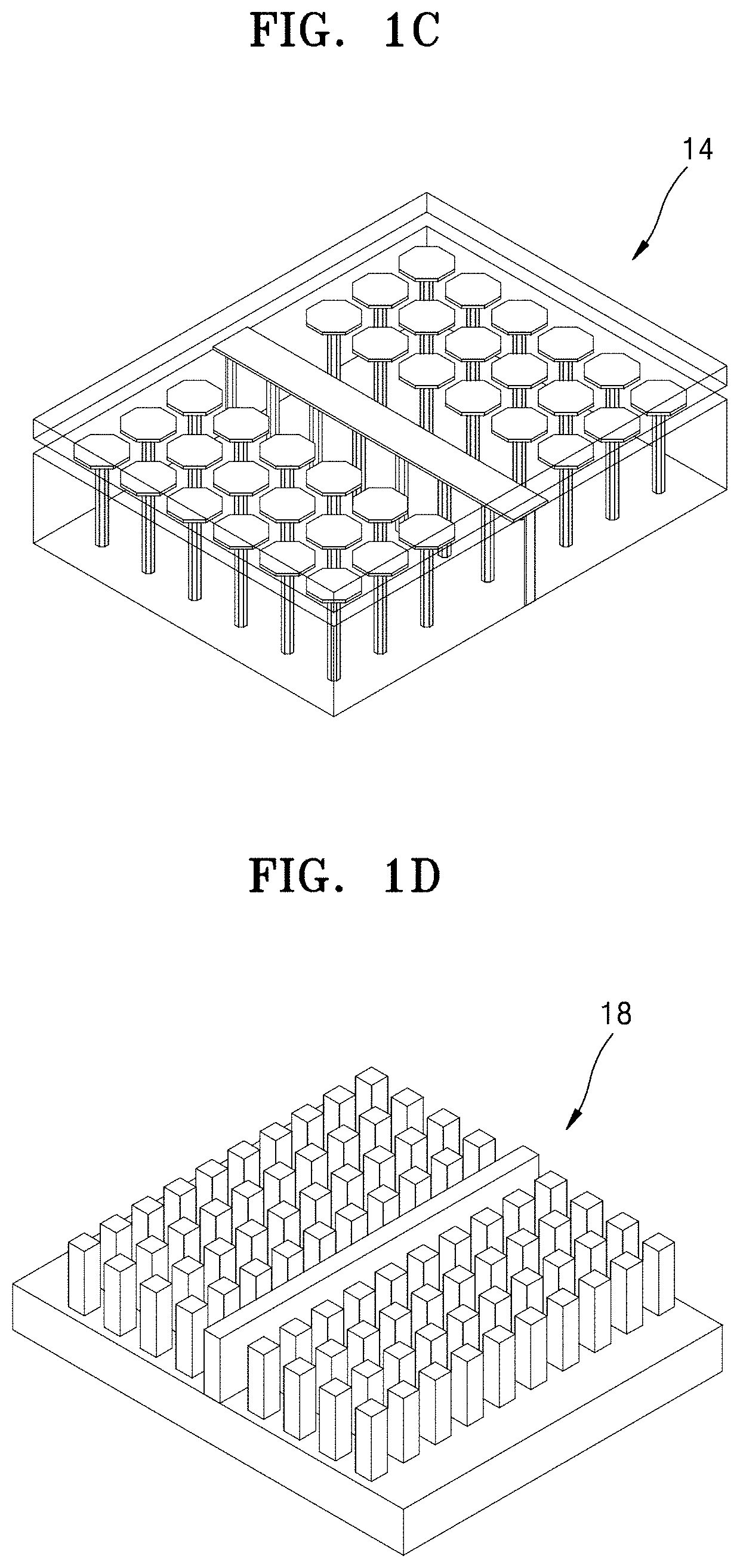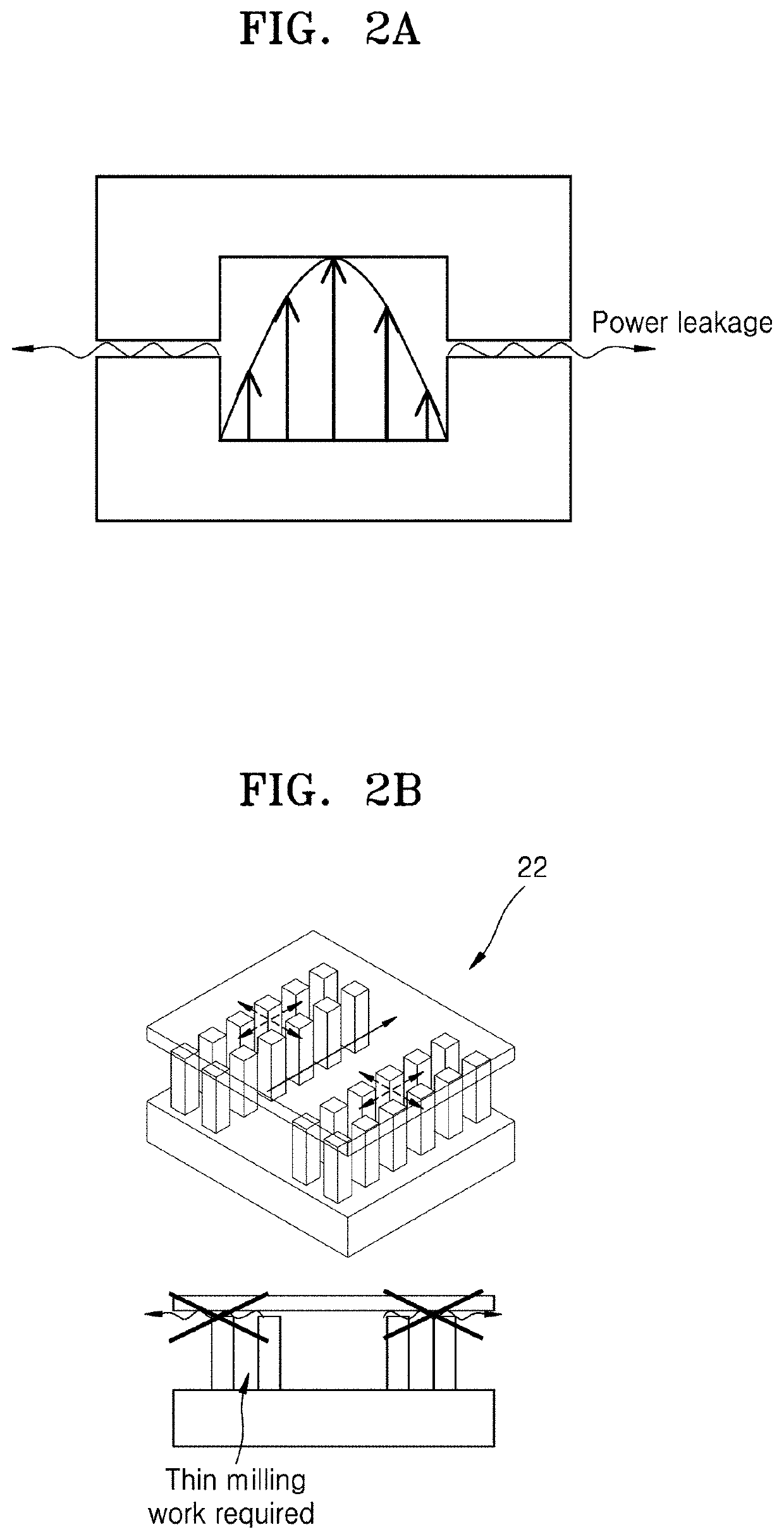Ridge gap waveguide and multilayer antenna array including the same
a waveguide and ridge gap technology, applied in waveguides, antenna details, antennas, etc., can solve the problems of increasing loss, reducing antenna efficiency, and too expensive active antennas in mass production or too larg
- Summary
- Abstract
- Description
- Claims
- Application Information
AI Technical Summary
Benefits of technology
Problems solved by technology
Method used
Image
Examples
Embodiment Construction
[0061]Embodiments of the disclosure will be described in detail with reference to the accompanying drawings. In the drawings, like reference numerals may denote like elements, and the size of each element may be exaggerated convenience of description. In addition, descriptions of well-known functions and constructions may be omitted for the sake of clarity and conciseness.
[0062]Terms such as “first”, “second”, and “third” may be used herein to describe various elements, components, regions, layers, and / or sections which should not be limited by these terms. These terms are only used to distinguish one element, component, region, layer, or section from another element, component, region, layer, or section. Thus, a first element, component, region, layer, or section may be referred to as a second element, component, region, layer, or section without departing from the scope of the disclosure. As used herein, the expression “and / or” includes any and all combinations of one or more of t...
PUM
| Property | Measurement | Unit |
|---|---|---|
| operating frequency | aaaaa | aaaaa |
| insertion loss | aaaaa | aaaaa |
| insertion loss | aaaaa | aaaaa |
Abstract
Description
Claims
Application Information
 Login to View More
Login to View More - R&D
- Intellectual Property
- Life Sciences
- Materials
- Tech Scout
- Unparalleled Data Quality
- Higher Quality Content
- 60% Fewer Hallucinations
Browse by: Latest US Patents, China's latest patents, Technical Efficacy Thesaurus, Application Domain, Technology Topic, Popular Technical Reports.
© 2025 PatSnap. All rights reserved.Legal|Privacy policy|Modern Slavery Act Transparency Statement|Sitemap|About US| Contact US: help@patsnap.com



